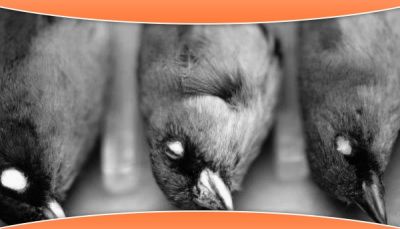
Bird Flu
History of Bird Flu
History of Bird FluIn 1918, the Spanish flu started off as a normal human influenza virus took a terrible turn and became terribly lethal. This was the first major flu pandemic of the 20th century. Scientists believe that this virus was a mutated form of a bird flu virus. The first reported case of bird the new bird flu virus was reported in May 1997. The H5N1 or the virus also known as the Bird Flu virus was identified to have infected 18 and killed six patients in Hong King. The victims had been in close contact with infected poultry. Poultry in Hong King was destroyed to stop and further spread.
Scientist understood that this virus would soon become a threat to the human population. The push to make antiviral drugs started. In 1998 clinical trials for Relenza and Tamiflu both drugs that target influenza viruses are started and a year later in 1998 the two drugs are allowed for sale in both Europe and the United States. In 1999 there is an appearance of one milder strain of the virus. This strain H9N2 is not deadly and those infected in China and Hong Kong recover. In 2003 H5N1 reappears again and infects a couple of people in Hong Kong. It was discovered that the two had returned from visit from China. A new strain also appears H7N7 which causes one death and 80 cases of infections. Later on in that year H9N2 infects a child who later recovers. A bird flu outbreak in poultry is South Korea and Taiwan is reported promoting a massive slaughter of infected poultry. In 2004 H5N1 resurfaced again and infected and killing some 32 people in Thailand and Vietnam. Domestic poultry in Thailand, Vietnam, Japan, South Korea, Pakistan, Cambodia, Indonesia, South China, and Malaysia are also infected and subsequently slaughtered, A new strain of bird flu H7N2 is discovered in the US promoting the slaughter of 80, 000 suspected infected birds and causing more to be quarantined. Throughout the year the bird flu viral strains H7N2 and H5N2 show up sporadically in the US. These are milder strains of the potent H5N1 virus. In April, Another mild virus infects a couple of poultry workers in Canada who survive. Two more mild forms of the virus are discovered after another outbreak in migratory bird; H5N2 and H5N6. In November the WHO starts warning about the possibility of a pandemic. In 2005 the bird flu continued with its assault, bringing the human toll throughout Asia to 64, 42 in Vietnam, 13 in Thailand, Indonesia five, and Cambodia 4. There was one likely human to human transmission of the virus in Vietnam. Several vaccines are developed for clinical trials. In May the WHO reports possible cases of a mutating bird flu virus making it more capable for human-to-human transmission. In June an Indonesian male shows no symptoms after being exposed and infected by the H5N1 virus. It is determined that his body has managed to develop immunity to the bird flu virus and he is determined to carry anti-bodies to the H5N1 strain. In August the bird flu is found in Tibet, Siberia, Russia, Turkey, Romania, Croatia, Canada and Kazakhstan. In October US researchers determined the famed Spanish flu was actually avian flu virus that had transitioned to human virus. |
Home
History of Bird Flu
Understanding Bird Flu
Symptoms of Bird Flu
How Bird Flu |
© 2006 Bird Flu Expert Secrets- All Rights Reserved.
Please note: all content is provided for information only and subject to change.
